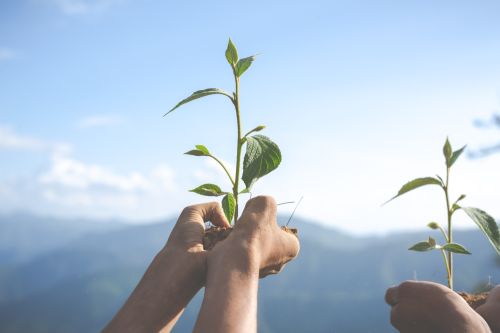Understanding Wind Energy Conversion Systems


Cut through the green tape
We don't push agendas. At Net Zero Compare, we cut through the hype and fear to deliver the straightforward facts you need for making informed decisions on green products and services. Whether motivated by compliance, customer demands, or a real passion for the environment, you’re welcome here. We provide reliable information—why you seek it is not our concern.
Wind energy conversion systems (WECS) represent a pivotal technology in the renewable energy landscape, harnessing wind's kinetic energy to produce electricity. As the world shifts towards sustainable energy sources, understanding the intricacies of WECS is crucial.
The Mechanics of Wind Energy Conversion Systems
Components of WECS
Wind Turbine: The heart of the WECS, a wind turbine consists of several key parts:
Blades: Capture wind energy by creating lift, causing the rotor to spin.
Rotor: Converts the kinetic energy of wind into rotational energy.
Nacelle: Houses the gearbox, generator, and control systems, acting as the central hub of the turbine.
Gearbox: This component increases the rotational speed from the rotor to a level suitable for electricity generation. Gearboxes are essential in traditional turbines but are being phased out in favour of direct-drive systems in some modern designs. Direct-drive systems eliminate the gearbox, enhancing efficiency and reducing maintenance needs.
Generator: Converts mechanical energy from the rotor into electrical energy. Wind turbines typically use one of two types of generators:
Synchronous Generators: Operate at a constant speed and are synchronized with the grid frequency.
Asynchronous (Induction) Generators: Can operate at variable speeds, offering flexibility and efficiency in varying wind conditions.
Control System: Ensures optimal turbine performance through various mechanisms:
Pitch Control: Adjusts the angle of the blades to capture the maximum amount of wind energy.
Yaw Control: Orients the turbine to face the wind, maximizing energy capture.
Brake System: Stops the rotor during extreme conditions or maintenance, ensuring safety and preventing damage.

Tower: Supports the nacelle and rotor, elevating them to heights where wind speeds are higher and more consistent. Towers can be constructed from steel, concrete, or a combination of both, and their height can range from 50 to over 150 meters.
Electrical System: Includes transformers and power electronics that ensure the generated electricity matches grid requirements in terms of voltage and frequency. This system is crucial for integrating wind energy into the broader electrical grid.
Foundation: Provides stability by anchoring the turbine to the ground or seabed. Foundations must be robust enough to withstand wind forces and varying soil or seabed conditions. Types of foundations include monopiles, gravity bases, and suction caissons.
Grid Connection: This transmits electricity from the turbine to a substation, which is integrated into the electrical grid for distribution. This involves a network of cables and transformers to ensure efficient and reliable power delivery.
Types of Wind Energy Conversion Systems
Horizontal Axis Wind Turbines (HAWT): The most prevalent type, with a rotor axis parallel to the ground. HAWTs are highly efficient and commonly used in both onshore and offshore installations. They typically have three blades and can vary in size from small residential turbines to large utility-scale machines.
Vertical Axis Wind Turbines (VAWT): Feature a rotor axis perpendicular to the ground. VAWTs can capture wind from any direction and are suitable for urban environments but generally offer lower efficiency compared to HAWTs. They come in various designs, including Darrieus and Savonius turbines.
Advantages of Wind Energy Conversion Systems
Renewable and Sustainable: Wind is an inexhaustible resource, making wind energy a sustainable option. Unlike fossil fuels, wind energy does not deplete natural resources or contribute to global warming.
Low Operational Costs: Once installed, wind turbines have minimal operational and maintenance costs. The primary expenses are related to initial installation and periodic maintenance.
Environmental Benefits: Wind energy produces no greenhouse gas emissions or air pollutants, contributing to cleaner air and reduced climate impact. It also reduces dependence on fossil fuels, promoting energy security and sustainability.

Cost Comparison Between Wind Energy and Other Energy Sources
The cost of generating electricity varies significantly across different energy sources. Key factors influencing these costs include fuel prices, technology costs, operation and maintenance expenses, and government policies. Comparison is based on the Levelized Cost of Energy (LCOE), a measure that incorporates all these factors to estimate the per-kilowatt-hour cost of generating electricity.
Wind Energy:
Onshore Wind: $30 - $60 per MWh
Offshore Wind: $80 - $150 per MWh
Solar Photovoltaic (PV):
Utility-Scale: $35 - $55 per MWh
Natural Gas Combined Cycle:
$45 - $70 per MWh
Coal:
$60 - $110 per MWh
Nuclear:
$110 - $170 per MWh
Hydropower:
$30 - $70 per MWh
Source: lazard.com
Wind energy, particularly onshore wind, is among the most cost-competitive energy sources, with costs comparable to or lower than those of natural gas and solar PV. Offshore wind is more expensive due to higher installation and maintenance costs but is becoming more competitive as technology advances.
Levelized Cost of Energy (LCOE) for Wind Power
Evolution Over Time
The LCOE for wind power has decreased significantly over the past few decades due to technological advancements, economies of scale, and improved project management. Key trends include:
1980s-1990s: Early wind turbines had high LCOE, often exceeding $200 per MWh. Limited technology and high capital costs were significant barriers.
2000s: Technological advancements, including larger turbines and improved materials, reduced LCOE to around $80 - $120 per MWh.
2010s: Continued innovation, larger project sizes, and better grid integration brought LCOE for onshore wind down to $30 - $60 per MWh. Offshore wind saw significant reductions as well, dropping to $80 - $150 per MWh.
2020s: The trend of decreasing LCOE continues, driven by advancements in turbine technology, improved efficiency, and reduced operational costs.
Government Incentives and Policies Affecting Wind Energy Adoption
Governments worldwide have implemented various incentives and policies to promote wind energy adoption, recognizing its environmental benefits and potential for energy security.
Financial Incentives
Production Tax Credit (PTC) and Investment Tax Credit (ITC) in the U.S. provide significant tax relief for wind energy projects.
Direct financial support to offset capital costs, such as the Renewable Energy Production Incentive (REPI).
Regulatory Policies
Renewable Portfolio Standards (RPS): Mandates that a certain percentage of electricity must come from renewable sources, driving demand for wind energy.
Feed-in Tariffs (FiTs): Guarantee fixed payments for renewable energy producers per unit of electricity generated, ensuring financial stability.
Research and Development (R&D) Support
Government funding for research into advanced wind turbine technologies, offshore wind development, and grid integration.
Collaborations between governments, academic institutions, and private companies to accelerate technological advancements.
Environmental and Land Use Policies
Streamlined processes for wind project approvals, reducing administrative barriers.
Regulations ensure that wind projects minimize impacts on wildlife and ecosystems.
Analysis of Countries and Regions with High Wind Energy Penetration
Several countries and regions around the world have successfully integrated high levels of wind energy into their energy mixes. These regions demonstrate the potential for wind energy to play a significant role in achieving renewable energy targets and reducing greenhouse gas emissions.
Denmark
Denmark is a global leader in wind energy, with over 50% of its electricity consumption sourced from wind power. The country has installed approximately 6 GW of wind capacity. Denmark's success can be attributed to robust government support through subsidies, tax incentives, and long-term energy planning. The Danish public shows strong support for renewable energy projects, which has facilitated widespread acceptance and development. Advanced grid infrastructure and integration technologies help manage the variable nature of wind energy. Denmark has also made significant investments in offshore wind farms, taking advantage of the favourable wind conditions in the North Sea.

Germany
Germany is another prominent player, with wind energy contributing around 30% of its electricity consumption and an installed capacity exceeding 60 GW. The Energiewende policy, Germany's comprehensive energy transition strategy, has been pivotal in promoting renewable energy. Initially, feed-in tariffs guaranteed stable returns for wind energy investments, encouraging rapid growth. Germany's strong industrial base has driven technological innovation in wind turbine manufacturing. Additionally, local ownership and community-based wind projects have garnered public support and investment, further bolstering the sector.
United States (Texas)
In the United States, Texas stands out with wind energy contributing approximately 20% of its electricity consumption, supported by an installed capacity of over 30 GW. Texas benefits from vast open spaces and favourable wind conditions, particularly in the central and western parts of the state. The state's deregulated electricity markets have allowed for competitive pricing and innovation in the wind energy sector. Significant investments in transmission infrastructure have connected wind-rich areas to major consumption centres, further bolstering wind energy deployment. Supportive state policies, including tax incentives and renewable energy targets, have also played a crucial role.
Spain
Spain has integrated wind energy into its energy mix to the extent that it accounts for around 23% of electricity consumption, with an installed capacity of approximately 29 GW. Spain was an early adopter of wind energy technologies and has consistently received government support. The country initially implemented FiTs, later transitioning to auction-based systems to promote cost-competitive wind energy development. Effective integration with other renewable sources like solar and hydroelectric power has helped balance supply. Additionally, Spain's investments in research and development have improved wind turbine efficiency and grid integration technologies.
Future Directions
The wind energy sector is continuously evolving with advancements in technology aimed at enhancing efficiency, reducing costs, and minimizing environmental impact. Larger turbines with higher capacities are being developed to capture more energy. Modern turbines can exceed 10 MW in capacity and have rotor diameters over 200 meters.
Enabling wind energy harnessing in deeper waters where wind speeds are higher and more consistent. Floating platforms allow turbines to be installed in locations previously inaccessible to traditional fixed-bottom structures.
Integrating wind energy with smart grids and advanced storage solutions to manage variability and ensure a reliable power supply. Technologies like battery storage, pumped hydro, and demand response systems are crucial for balancing supply and demand.
Innovations in materials science and manufacturing processes are leading to lighter, stronger, and more cost-effective turbine components. This includes the use of carbon fibre composites and 3D printing.

More related content

Extended Producer Responsibility (EPR) for Packaging: Country-by-Co...

What Is Scope 3? Understanding Indirect Emissions and Their Regulat...

The EU's Omnibus Proposal: A Deep Dive
